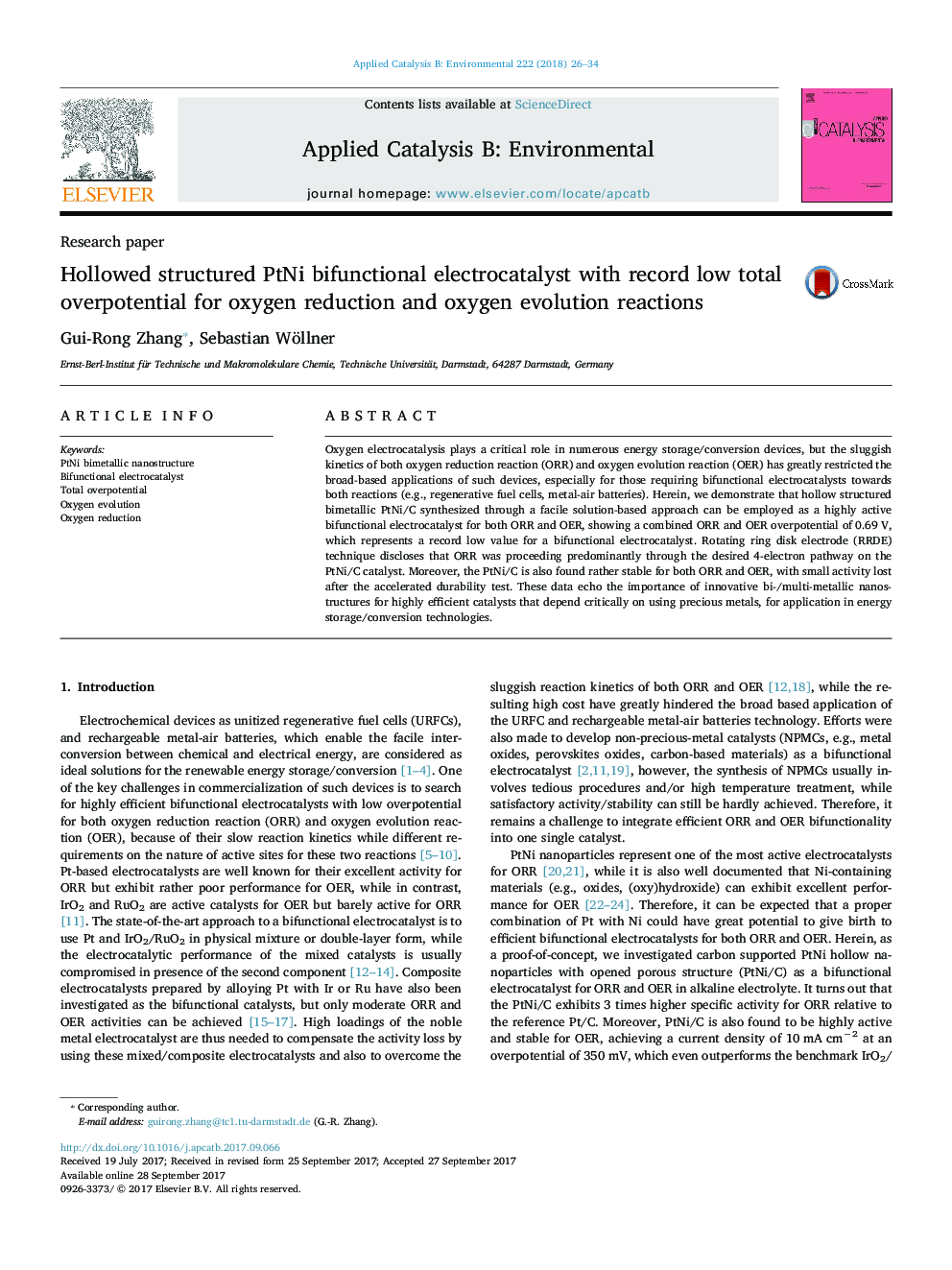| Article ID | Journal | Published Year | Pages | File Type |
|---|---|---|---|---|
| 6453345 | Applied Catalysis B: Environmental | 2018 | 9 Pages |
â¢Accordingly, the highlights have been revised as followings: Hollow structured PtNi nanostructures have been successfully synthesized through a facile solution-based approach.â¢PtNi/C catalyst presents a record low total overpotential towards ORR and OER.â¢Small amount of Ni in PtNi nanostructures plays an essential role in controlling their catalytic properties for ORR and OER.â¢PtNi/C catalyst holds the potential to be a new benchmark bifunctional electrocatalyst.
Oxygen electrocatalysis plays a critical role in numerous energy storage/conversion devices, but the sluggish kinetics of both oxygen reduction reaction (ORR) and oxygen evolution reaction (OER) has greatly restricted the broad-based applications of such devices, especially for those requiring bifunctional electrocatalysts towards both reactions (e.g., regenerative fuel cells, metal-air batteries). Herein, we demonstrate that hollow structured bimetallic PtNi/C synthesized through a facile solution-based approach can be employed as a highly active bifunctional electrocatalyst for both ORR and OER, showing a combined ORR and OER overpotential of 0.69Â V, which represents a record low value for a bifunctional electrocatalyst. Rotating ring disk electrode (RRDE) technique discloses that ORR was proceeding predominantly through the desired 4-electron pathway on the PtNi/C catalyst. Moreover, the PtNi/C is also found rather stable for both ORR and OER, with small activity lost after the accelerated durability test. These data echo the importance of innovative bi-/multi-metallic nanostructures for highly efficient catalysts that depend critically on using precious metals, for application in energy storage/conversion technologies.
Graphical abstractDownload high-res image (216KB)Download full-size image
